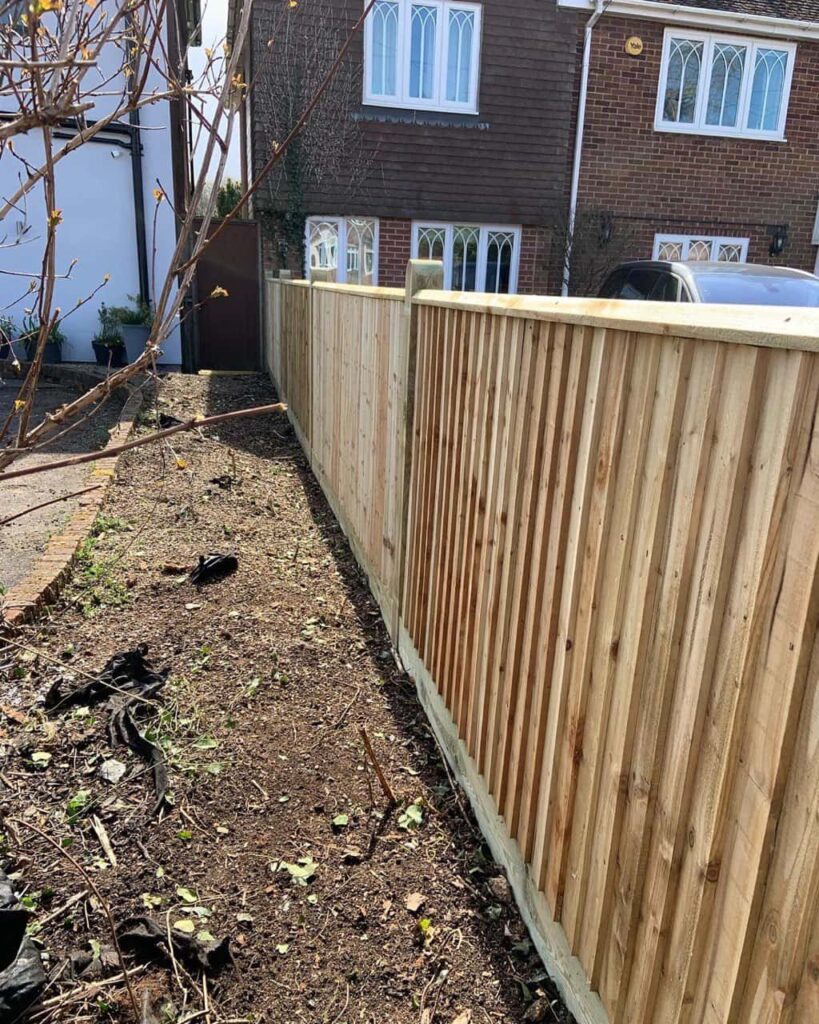How to Install a Picket Fence That Stays Straight and Sturdy
Introduction
A picket fence is a classic addition to any property, providing both charm and functionality. Whether used to define boundaries, enhance kerb appeal, or add security, a well-installed picket fence should remain straight and sturdy for years. However, improper installation can lead to leaning posts, misaligned panels, and structural weaknesses.
For homeowners in Sutton, Cambridge, ensuring a properly installed picket fence requires careful planning, high-quality materials, and correct installation techniques. This guide outlines the essential steps to achieving a durable and level picket fence that will stand the test of time.
Key Takeaways
- Proper ground preparation is essential for a straight and secure fence.
- High-quality materials and correct spacing prevent warping and misalignment.
- Securely installed fence posts are key to long-term stability.
- Regular maintenance ensures the fence remains in top condition.
- Fast Fix Fencing Sutton provides professional picket fence installation in Sutton, Cambridge.
Planning the Installation
Choosing the Right Materials
A sturdy picket fence starts with selecting durable materials. While wood is the traditional choice, there are different options to consider:
- Pressure-treated timber resists rot, insects, and moisture.
- Cedar and oak offer a natural look with excellent durability.
- Vinyl picket fencing provides a low-maintenance alternative to wood.
Ensuring all materials are weatherproofed will help extend the life of the fence.
Measuring and Marking the Fence Line
A straight fence requires precise measurements and clear marking before installation. Steps to follow:
- Use stakes and string to outline the fence line.
- Measure equal distances between posts to ensure uniform spacing.
- Mark post locations with spray paint or wooden stakes.
Checking the alignment from multiple angles helps prevent crooked fencing.
Setting the Fence Posts
Digging Post Holes
The strength of a picket fence depends on securely anchored posts. To achieve this:
- Dig post holes at least 60 cm deep for stability.
- Ensure the holes are wide enough to accommodate concrete footing.
- Use a post-hole digger for clean, evenly sized holes.
In areas with soft or sandy soil, deeper holes or gravel bases may be necessary to prevent shifting.
Installing and Securing Posts
Each post should be set straight and level to maintain fence alignment. The best method is:
- Place a layer of gravel at the bottom of each hole for drainage.
- Set the post in place and fill the hole with fast-setting concrete.
- Use a spirit level to check alignment before the concrete hardens.
- Allow at least 24 hours for the concrete to fully cure before attaching panels.
Properly installed posts prevent future leaning and movement.
Attaching the Rails and Pickets
Fixing the Horizontal Rails
Rails provide structural support to keep the fence sturdy. They should be attached using:
- Two horizontal rails for short fences and three for taller fences.
- Galvanised nails or screws to prevent rusting and weakening.
- Proper spacing to allow for natural wood expansion.
Rails should be securely fixed to posts to support the weight of the pickets.
Installing the Pickets
Each picket must be evenly spaced and aligned to maintain a consistent and polished look. Steps to follow:
- Start with end and corner pickets to establish the height.
- Use a spacer block to ensure equal gaps between each picket.
- Secure pickets with rust-resistant screws or nails.
- Periodically check for straight alignment as you progress.
A well-spaced picket fence provides both privacy and an aesthetically pleasing design.
Finishing and Maintaining the Fence
Sealing and Painting
To protect against weather damage, the fence should be:
- Treated with a wood preservative to prevent rot.
- Painted or stained for added durability and colour retention.
- Sealed with UV and moisture-resistant coatings.
A protective finish extends the life of the fence and enhances its appearance.
Regular Maintenance
Routine maintenance keeps the fence in top condition. Important steps include:
- Inspecting for loose nails or screws and tightening them as needed.
- Checking for warping or leaning and making adjustments.
- Repainting or resealing every few years to maintain protection.
With proper care, a picket fence can last for decades without significant repairs.
Why Choose Fast Fix Fencing Sutton?
For expert picket fence installation in Sutton, Cambridge, Fast Fix Fencing Sutton offers:
- Professional fence installation using high-quality materials.
- Expert alignment and secure post installation for lasting durability.
- Customised fencing solutions tailored to different property styles.
- Reliable and efficient service to ensure a hassle-free installation.
Conclusion
Installing a picket fence that stays straight and sturdy requires careful planning, quality materials, and proper installation techniques. By setting posts securely, ensuring even spacing, and performing regular maintenance, homeowners can enjoy a long-lasting and visually appealing fence.
For professional picket fence installation in Sutton, Cambridge, Fast Fix Fencing Sutton provides expert craftsmanship to ensure a durable and perfectly aligned fence. Contact us today to discuss your fencing needs and achieve a high-quality result built to last.
Call us on: 01223 912 298
Click here to find out more about Fast Fix Fencing Sutton
Click here to complete our contact form and see how we can help with your fencing needs.

